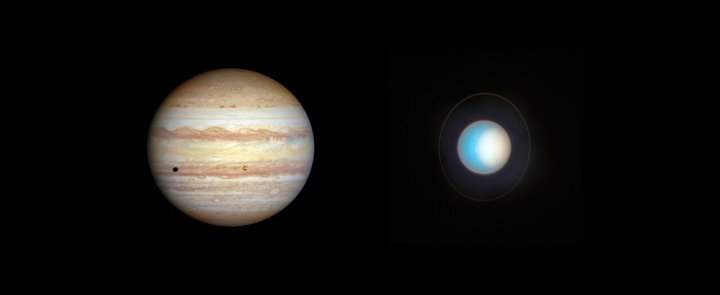Our planet isn’t the only place in the solar system with dramatic weather changes. Other planets in the solar system also experience seasons, depending on their distance from the sun, and that affects their climates. One of the many jobs of the Hubble Space Telescope is to monitor the changing seasons on other planets, particularly the larger outer planets which aren’t so often observed. And this week, scientist have released their newest views of Jupiter and Uranus, taken by Hubble and showing seasonal changes on the two planets.
Jupiter is far from the sun, so most of its heat comes not from outside but from within. Jupiter is thought to have a very high core temperature, which may be a result of how it was formed but could also be topped up by processes inside the planet. As this heat escapes from the planet’s interior, it affects its atmosphere which contains multiple layers and has unusual features like geometric storms at its poles.
As for Uranus, the image beautifully captures the planet’s rings and the white haze over the planet’s pole. Uranus is unusual in that it is tipped almost entirely over so it orbits on its side, unlike Earth and most other planets which orbit upright. That’s why the polar haze can be seen on the right-hand side of the planet.
The haze is thought to come from the polar cap, the appearance of which changes dramatically over the seasons. Astronomers are still learning about how this cap changes over time, and it is thought that it will get even brighter as the northern pole will be aimed toward Earth during the planet’s northern summer solstice in 2028.
If you head to the ESA Hubble website you can also see side-by-side comparisons of Jupiter in November 2022 and January 2023, and Uranus in November 2014 and November 2022, showing how the planets change in appearance over time.




